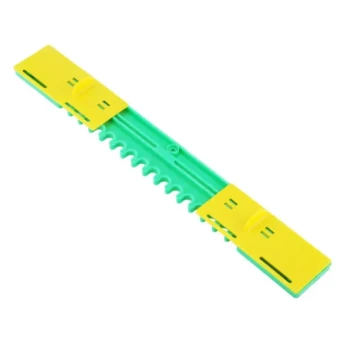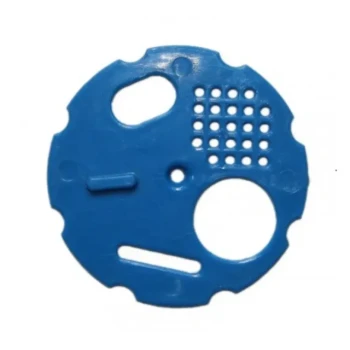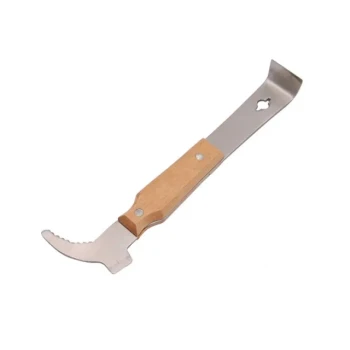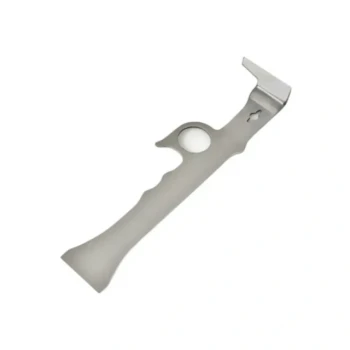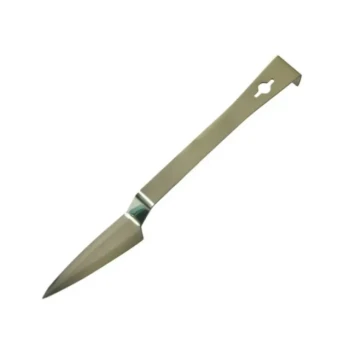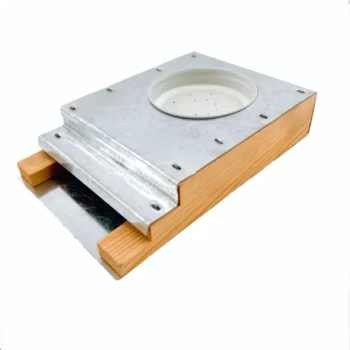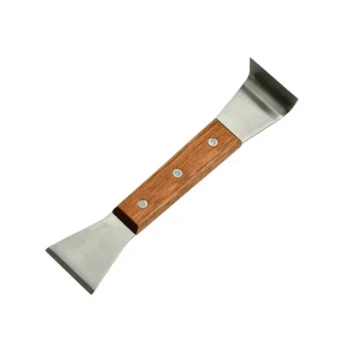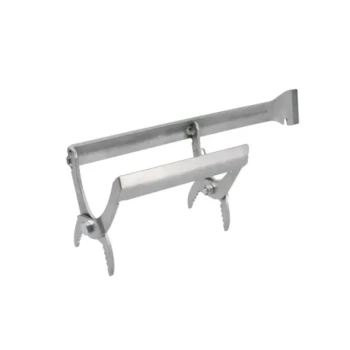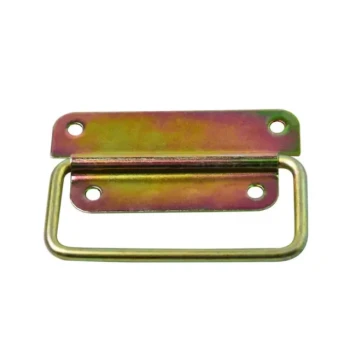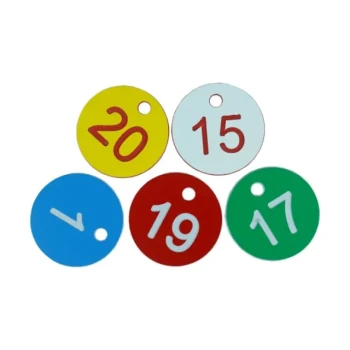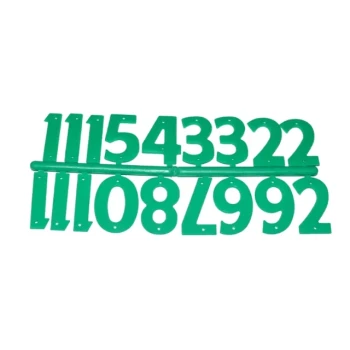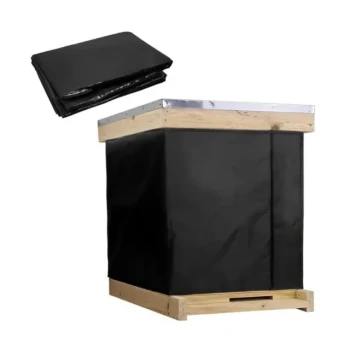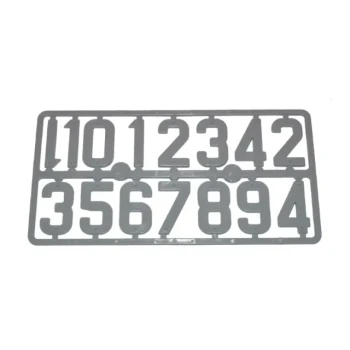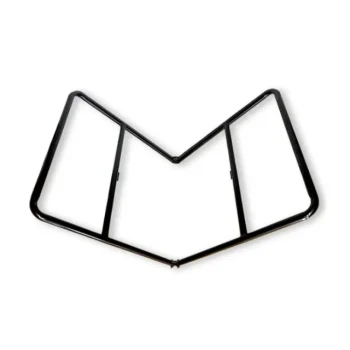The ideal entrance for a bee hive is one that faces south or southeast. This orientation allows the hive to capture the early morning sun, which warms the colony, encourages earlier foraging activity, and critically, helps save bees during winter cleansing flights.
The direction a hive faces is not a simple rule, but a strategic decision to balance the competing needs for warmth, ventilation, and protection. Your primary goal is to create a stable microclimate that minimizes stress on the colony throughout the year.
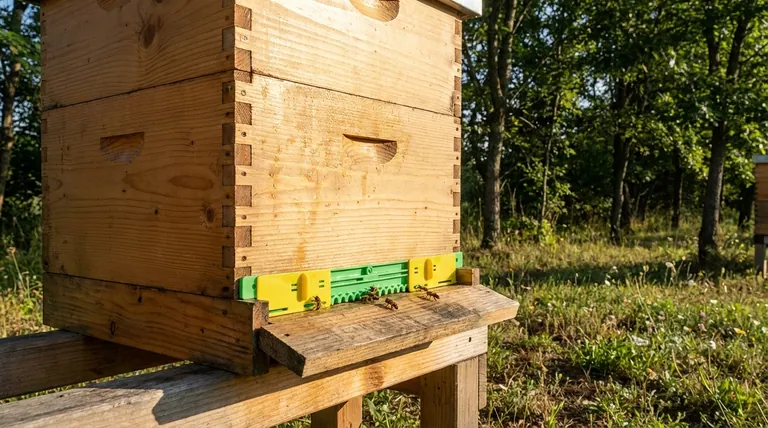
The Core Principle: Sun as an Engine
A hive's orientation is first and foremost about energy management. By using the sun effectively, you help the bees conserve their own energy and resources for more important tasks.
Leveraging the Morning Sun
The morning sun acts as a natural alarm clock. Warming the front of the hive encourages bees to begin foraging earlier in the day, which can significantly increase their honey production and pollination activity.
This early warmth also helps to dry out any condensation that may have built up on the landing board or inside the entrance overnight, reducing the risk of mold and disease.
The Critical Role of Winter Sun
In colder climates, bees will take advantage of warmer winter days to exit the hive for "cleansing flights" to void waste. The reference you provided is correct: if the entrance is in the shade, bees may land on the cold ground or hive exterior and become too chilled to fly back, perishing just inches from home.
A south-facing entrance ensures the landing area is the warmest spot available, dramatically increasing their chances of a safe return.
Beyond Direction: Other Environmental Factors
While sun exposure is a primary concern, it is not the only one. The best location is a compromise that accounts for several other critical factors.
Shielding from Prevailing Winds
A constant wind blowing into the hive entrance acts like an open door in winter. It chills the brood nest, forcing the bees to consume significantly more honey stores just to stay warm.
Position your hive with a natural windbreak at its back, such as a line of trees, a hedge, or a building. This is often more important than achieving a perfect southern exposure.
Ensuring Proper Drainage
Bee hives must be kept dry. Place your hive on a stand to keep it off the damp ground and ensure the location does not collect standing water after a rain.
Furthermore, it is standard practice to slightly tilt the entire hive forward. This ensures any rainwater that blows into the entrance or condensation that forms inside runs out the front, rather than pooling on the bottom board.
Preventing Summer Overheating
The same sun that is beneficial in winter can be detrimental in summer. In hot climates, a hive baking in the intense afternoon sun can overheat.
This forces a large portion of the colony to stop foraging and instead focus on fanning and "bearding" at the entrance to ventilate the hive, reducing productivity. Dappled afternoon shade from a deciduous tree is the ideal solution, as it provides shade in summer but allows sun through in winter.
Understanding the Trade-offs
The "perfect" hive location rarely exists. Effective beekeeping means understanding the compromises and managing them intelligently.
Winter Sun vs. Summer Heat
This is the most common conflict. A wide-open, south-facing spot is perfect for winter but can be a furnace in July. A spot with dense summer shade may be too cold and damp in the spring.
The solution is often a location with afternoon shade or creating artificial shade during the hottest months. A deciduous tree is nature's perfect answer to this problem.
The Role of the Entrance Reducer
The size of the entrance is just as important as its direction. A small entrance is easier for the bees to defend against predators like wasps and is critical for maintaining heat in the winter.
Use an entrance reducer set to its smallest opening during winter and for new or weak colonies. Open it to the larger setting or remove it entirely during the main summer honey flow to improve ventilation and reduce traffic jams.
Ideal vs. Practical Placement
Do not sacrifice a good location for a perfect orientation. A hive facing east that is well-protected from wind and has good drainage is far superior to a south-facing hive sitting in a windy, swampy part of your yard.
Making the Right Choice for Your Climate
There is no single answer, only a best answer for your specific conditions. Use these guidelines to prioritize.
- If your primary focus is surviving cold winters: Prioritize a south-to-southeast facing entrance with an excellent windbreak to maximize every bit of winter sun.
- If your primary focus is managing extreme summer heat: Prioritize dappled afternoon shade to prevent the colony from overheating, even if the orientation is more easterly.
- If your primary focus is dealing with wind and rain: Your top priority is a well-drained location with a robust natural or man-made windbreak.
A well-sited hive gives your bees the head start they need to thrive.
Summary Table:
| Factor | Ideal Condition | Key Benefit |
|---|---|---|
| Direction | South or Southeast | Captures morning sun, encourages early foraging, aids winter survival |
| Wind Protection | Natural windbreak (trees, hedge) | Reduces heat loss, conserves honey stores |
| Drainage | Slight forward tilt, elevated on a stand | Prevents moisture buildup, reduces disease risk |
| Summer Shade | Dappled afternoon shade (e.g., deciduous tree) | Prevents overheating, maintains colony productivity |
Equip Your Apiary for Success with HONESTBEE
Give your bees the best possible start with durable, well-designed equipment from HONESTBEE. We supply commercial apiaries and beekeeping equipment distributors with the wholesale supplies needed to build strong, productive colonies. From hive stands that ensure proper drainage to entrance reducers for seasonal management, our products are built to support the principles of optimal hive placement.
Let's build a thriving operation together. Contact our wholesale team today to discuss your equipment needs and volume pricing.
Visual Guide

Related Products
- Multi-Functional Sliding Hive Entrance for Beekeeping
- Beehive Entrance Reducer Guardian Metal Hive Entrance for Bees
- Multi-Functional Rotary Hive Entrance Disc for Beekeeping
- Beehive Entrance Discs Plastic Bee Entrance Disc for Bee Hives
- HONESTBEE Professional Multi-Functional Hive Tool with Ergonomic Wood Handle
People Also Ask
- How does the sliding design of the entrance reducer benefit beekeepers? Achieve Ultimate Hive Control
- How do bees manage debris with a small hive entrance? A Guide to Strategic Hive Management
- Why is a smaller entrance size beneficial for a beehive? Boost Hive Defense & Productivity
- How can a Langstroth hive entrance be adjusted? Mimic Natural Bee Preferences for a Healthier Hive
- What are the different entrance sizes for an 8 or 10-frame Langstroth hive? A Guide to Seasonal Management
